| Common | ||
|---|---|---|
 |
Fennel |
Fennel promotes collagen synthesis to keep the skin firm and tight. It protects against the signs of aging, combats cancer, soothes colicky babies, relieves menstrual cramps, prevents osteoporosis, and fights against obesity. It can also lower blood pressure, aids in digestion, increases satiety, decreases the chances of heart disease, promotes eye health, treats anemia, reduces flatulence, treats most intestinal issues, and boosts brain function. |
 |
Holy Basil | Unlike basil, which has a sweet taste, the holy basil has a peppery clove-like flavor.It cures fevers, treats bronchitis, relieves respiratory congestion, treats asthma, and treats lung disorders. It can also promotes cardiovascular health, relieves stress, acts as a mouth freshener, inhibits the growth of oral cancer, fights against bad breath, and destroys dental cavities, plaque, and tartar. In addition, it cleans out kidney stones, cures skin infections, treats migraines, cures cough and colds, and fights the signs of aging. |
 |
Mint | It acts as a great palate cleanser. Mint also promotes healthy digestion, soothes upset stomachs, cures nausea and headaches, clears up nasal congestion, relieves chronic coughing, and helps with asthma. For breastfeeding moms, it can reduce nipple cracks and nipple pain from breastfeeding. Mint fights against depression and fatigue, aids in memory loss, gets rid of pimples, and helps in weight loss. This herb heals and soothes burns, treats rheumatism, boosts brain activity, and induces sweating on people with fever. It can also soothe muscle ache, relieves heartburn (if taken in small doses), prevents cancer, and improves eye health. |
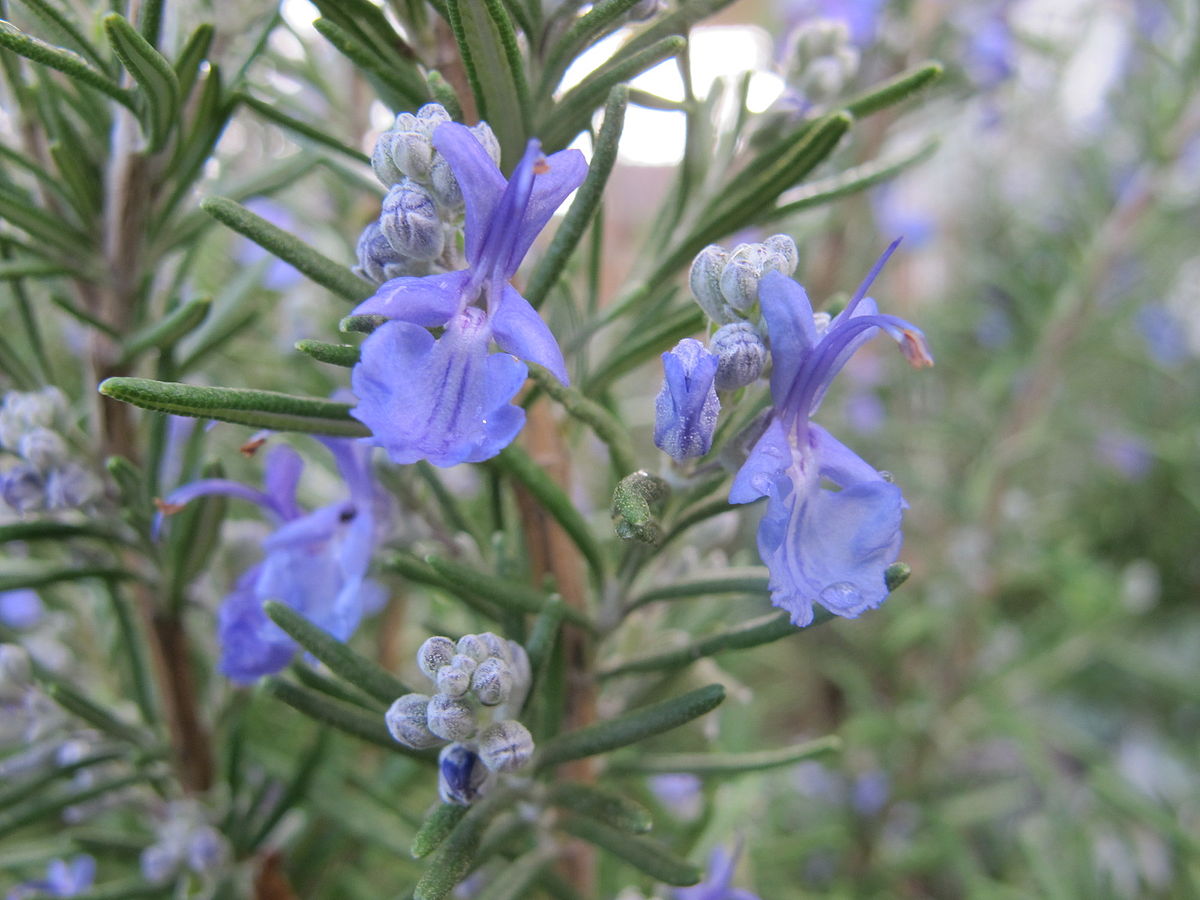 |
Rosemary | Rosemary helps boost concentration and memory retention. It eases stress levels and improves hair growth. It also treats muscle aches and pains, relieves gastrointestinal issues, prevents cancer cells from replicating, treats gout, reduces high blood pressure, fights against eczema, and soothes toothaches. In addition, rosemary also boosts the immune system, fights against bacterial infections, stimulates blood flow, provides pain relief, and gives naturally fresh and clean breath. |
 |
Thyme | Thyme and thyme again, because of its distinctive flavor, it’s used in plenty of recipes. Thyme is used healthwise as well. It is an effective acne treatment, lowers blood pressure, remedies cough, boosts the immune system, and acts as a disinfectant. In addition, thyme can fight sore throats, lowers cholesterol levels, prevents food poisoning, prevents and treats colon cancer, treats bronchitis, and improves your mood. |
 |
Wild Bergamot | These wildflowers from the mint family are typically up to 3 ft (0.9 m) tall, with a few erect branches. Its leaves are about 2-3 in (5–8 cm) long, lance-shaped, and toothed. Its compact flower clusters are solitary at the ends of branches. Each cluster is about 1.5 in (4 cm) long, containing about 20–50 flowers. Wild bergamot often grows in rich soils in dry fields, thickets, and clearings, usually on limy soil. It can be used for treating colds, minor wounds, and infections. |
 |
Blackberries | Plant itself carries pinkish-white flowers, each flower has five petals and produces one fruit crop a year. It traditionally grows in sunny areas. It can usually be found or identified by it’s sharp scent. These plants are found almost anywhere, making them very handy. To use them, you would chew them into a pulp and mix into a poultice. Animals use it for bee stings. |
 |
Honey | A sweet, golden-colored liquid made by bees. It is found in bees nests which are usually up in trees. For use, it is eaten or given by moss soaked in it. Animals use it to soothe infections, for smoke-damaged or sore throats, to help animals swallow other conceptions, to help soothe coughing, and for energy. |
 |
Poppy Seeds | Tiny, round black seeds that are shaken out of a dried poppy flowerhead. It can be found all over forests. For use, it is chewed on. Animals use it for help sleeping, to soothe shock or distress, or ease pain. However, it is not recommended for nursing mothers. |
 |
Borage Leaves (Starflower) | It is easily distinguished by its small blue or pink star-shaped petals and hairy leaves. Borage can be distinguished by smell just as well as sight. The best leaves are typically halfway up the stem, and have a zesty scent to them. Leaves can be dark green or grey-green in color, soft, and they lose their flavor when they are dried out. Borage can most commonly be found in forests and around lakes. For use, the leaves are chewed and eaten. Animals use it to produce more and better milk for children. It also brings down fevers, helps soothe bad bellies, and relieves tight chests. |
 |
Pokeberry | It has simple leaves on green to red or purplish stems and a large white taproot. The flowers are green to white, followed by purple to almost black berries. It is found in pastures, recently cleared areas, and woodland openings. Every part of this plant is very toxic and should not be eaten. Animals use it to poison other creatures. |
 |
Dried Oak Leaf | Round, cartoon-like ruffled leaves. They can be found all over forest floors and are collected during fall. The dried leaves are stored in a dry location until the time of usage. For use, they chewed into a thick poultice and spread on a wound. Animals use it to stop infections from settling in. |
 |
Mouse Bile | Foul smelling, yellowish-green liquid. It can be found anywhere mice are present. For use, the liquid is stored in moss and dabbed onto ticks embedded in fur. Animals use it to get rid of ticks. |
 |
Wild Garlic | Extremely sharp and tangy scent. It grows in patches and typically has a white bulb with green leaves. They can also occasionally grow a flower. It is found in damp areas or woodlands. For use, an animal is to roll in it. Animals use it to draw out poison in bites and to prevent infection. |
 |
Yarrow | A flowering plant with green, jagged leaves, a tangy scent and a bitter taste. It is mostly found in forests, but can be seen elsewhere. For use, its leaves are chewed into a poultice that can be given to animals or applied to a wound, depending on the situation. Animals use it to extract poison from wounds, it will make animals vomit up toxins. The ointment will soften and help heal cracked pads. |
 |
Dock | Common, large-leafed plant with a tangy smell and taste. Though it is common, it doesn’t grow well in mountains and is best in leafy areas. For use, it is chewed up and applied to scratches and can be put in one’s bed or den. Animals use it to soothe scratches, though can sting when applied. It also soothes sore pads and if placed in a bed or nest, can ease the pain of wounds. |
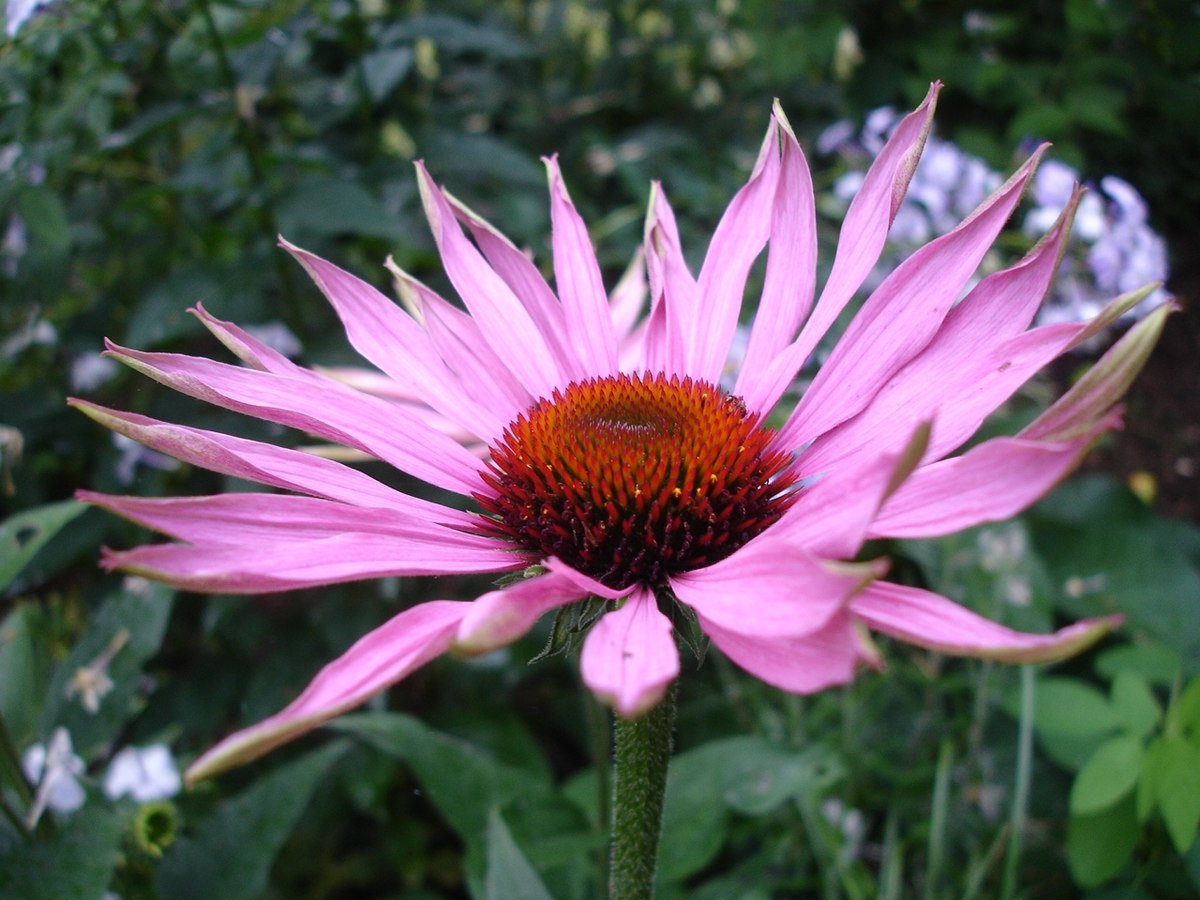 |
Echinacea | This is a coneflower that comes in many different colors. It is mostly found in moist to dry prairies or open wooded areas. For use, it is chewed then applied. Animals mainly use it to ease infections. |
 |
Ferns | Ferns are a type of bushy plant with no seeds or flowers. They grow basically everywhere. For use, they are applied to the area. Animals use them to clean out wounds. |
 |
Hawthorn Berries | The plant itself is a shrub or small tree 15 to 45 feet tall, with a dense crown. It is very common and can be found anywhere. For use, the berries are eaten. Animals commonly use it for heart burn or indigestion. |
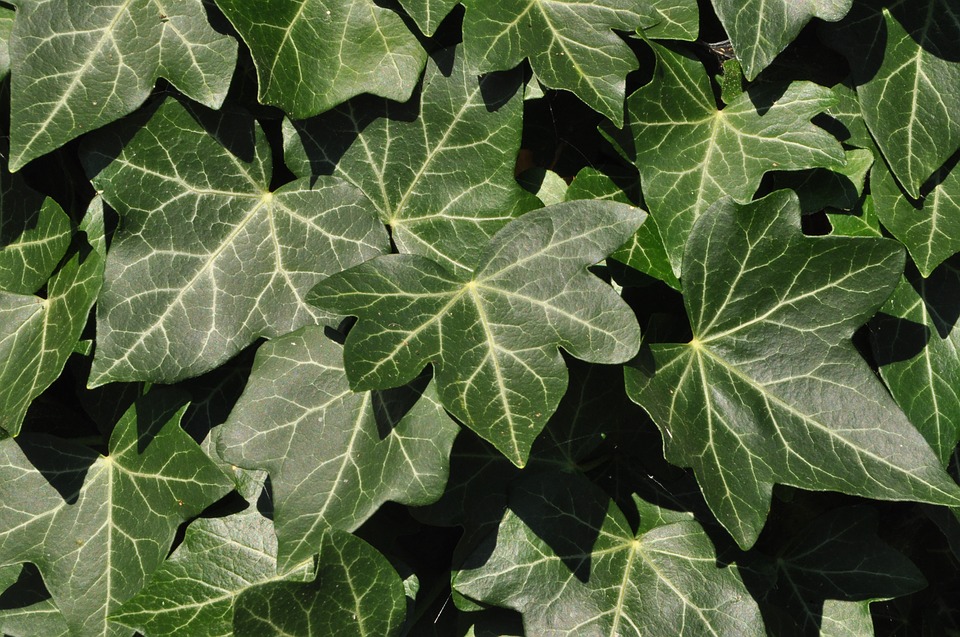 |
Ivy | Ivy is a plant that on level ground, doesn’t become very big, but it can climb many things like trees and boulders. It has greenish-yellow flowers and the berries are a greenish-black, dark purple, or (rarely) yellow. It grows everywhere and is considered invasive. For use, it is eaten. Animals use it to calm down the body. |
 |
Daisy Leaves | Thick, dark green, oval shaped leaves. Daisies are very common and can be found most places. For use, the leaves are chewed into a paste. Animals use them to ease the pain of aching joints. |
 |
Dandelion | A dandelion is a common, yellow-flowered plant with long, hollow stems. After flowering is finished, the flower transforms a sphere made out of hundreds of smaller white florets with seed heads at the bottom that connect to the flower head. Dandelions can be found anywhere and everywhere. For use, the white liquid is thought to be applied to bee stings but it can also be chewed. It is thought to soothe and heal bee stings. It’s leaves can also be chewed to act as a painkiller. |
 |
Goosegrass (Galium aparine) | This plant is an annual with creeping straggling stems which branch and grow along the ground and over other plants. They attach themselves with the small hooked hairs which grow out of the stems and leaves. The stems can reach up to three feet or longer, and are angular or square shaped. The leaves are simple, narrowly oblanceolate to linear, and borne in whorls of six to eight. Goosegrass has tiny, star-shaped, white to greenish flowers, which emerge from early spring to summer. The flowers are clustered in groups of two or three, and are borne out of the leaf axils. The corolla bears 4 petals. The globular fruits are burrs which grow one to three seeds clustered together; they are covered with hooked hairs which cling to animal fur, aiding in seed dispersal. This plant can be found almost anywhere. For use, it can made into a poultice and applied to the affected area or it can be chewed into a pulp. Animals use it to to help light wounds and burns or relieve poisonous bites and stings. |
| Uncommon | ||
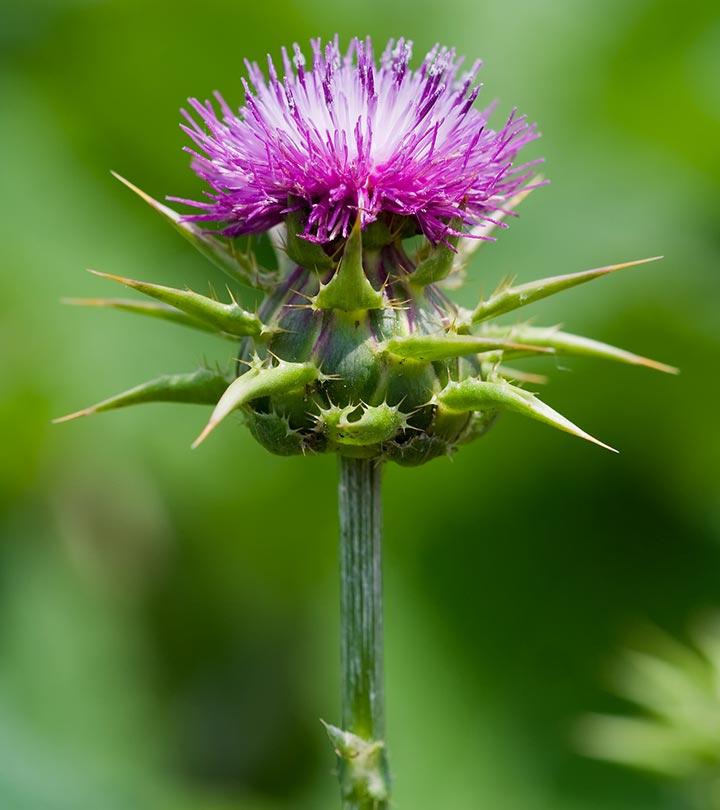 |
Milk Thistle | supports kidney, gallbladder, and liver health. It also contains potential anti-cancer properties. Milk thistle also promotes heart health, regulates blood sugar levels, and boosts brain health. In addition, it improves skin conditions, reduces skin damage caused by radiation treatment, prevents free radical damage, reduces visible signs of aging, and maintains healthy eyes. |
 |
Oregano | It reduces oxidative stress, fights against harmful free radicals, defends the body against harmful bacteria, speeds up metabolism, and promotes good digestion. Also, it balances out cholesterol levels, reduces inflammation in the cardiovascular system, speeds up the process of toxin elimination, and promotes bone health. Oregano can also rejuvenate the body and keeps it energized, treats urinary tract infections, remedies sleeping problems, relieves cough and colds, prevents degenerative arthritis, and heals wounds and insect bites. |
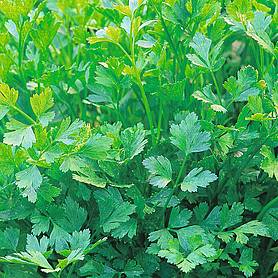 |
Parsley | For one, it aids in bone health, boosts the immune system, fights the effects of aging, protects the body from free radical damage, and supports healthy kidney function. It can also relieve joint pains, relaxes stiff muscles, promotes good digestion, treats anemia, and contains cancer-fighting compounds. Lastly, it protects against rheumatoid arthritis, cleanses the liver, balances hormones, acts as a diuretic, reduces bad breath, and improves appetites. |
 |
Sage | Sage helps a lot with digestive problems, which include flatulence, gastritis, loss of appetite, bloating, diarrhea, and heartburn. For women, it soothes painful menstrual cramps, corrects excessive milk flow for breastfeeding moms, and reduces hot flashes for menopausal women. It also functions as an effective brain booster, possesses anti-inflammatory properties, prevents oxidative stress, fights against Alzheimer’s disease and dementia, promotes bone strength, and helps in keeping skin healthy. In addition, it lowers blood glucose, lowers cholesterol, improves fertility, and treats night sweats in tuberculosis patients. |
 |
Celandine | Celandine is a yellow flower with four petals. It can grow almost everywhere. For use, it is crushed into a juice before trickled into the eye. This plant is best used for weakened or damaged eyes. |
 |
Chervil | A sweet-smelling plant with large, leafy, fern-like leaves and small white flowers. The roots are described as being knobby and brown. Mostly found in forests, but can be found elsewhere. For use, it is chewed to extract the juice of the leaves or roots. Animals use it for infected wounds and bellyache, respectively. Can also be used during birth. |
 |
Alfalfa | This plant superficially resembles a clover, especially when it’s young, when trifoliate comprising round leaflets predominate. Later in maturity, leaflets are elongated. It has clusters of small purple flowers followed by fruits spiraled in 2 to 3 turns containing 10-20 seeds. Alfalfa is found in warmer temperate climates. For use, it is eaten. Animals mainly use it to prevent tooth decay but if too much is consumed, it can make the animal’s skin extra sensitive to sunlight. |
 |
Feverfew | Small bush with flowers resembling daisies. Has a sharp tangy smell and small soft leaves. It grows best along water sources. For use, it is eaten. Animals use it to reduce body temperature in case of fevers or chills. Also heals aches and pains, especially good for headaches. |
 |
Juniper Berries | Purple-blue berries from the dark green, spiky-leaved juniper bush. It grows anywhere that isn’t wet. For use, it is chewed and eaten. Animals use it to soothe bellyaches, for strength, and to help troubled breathing. It is also used to help calm animals. |
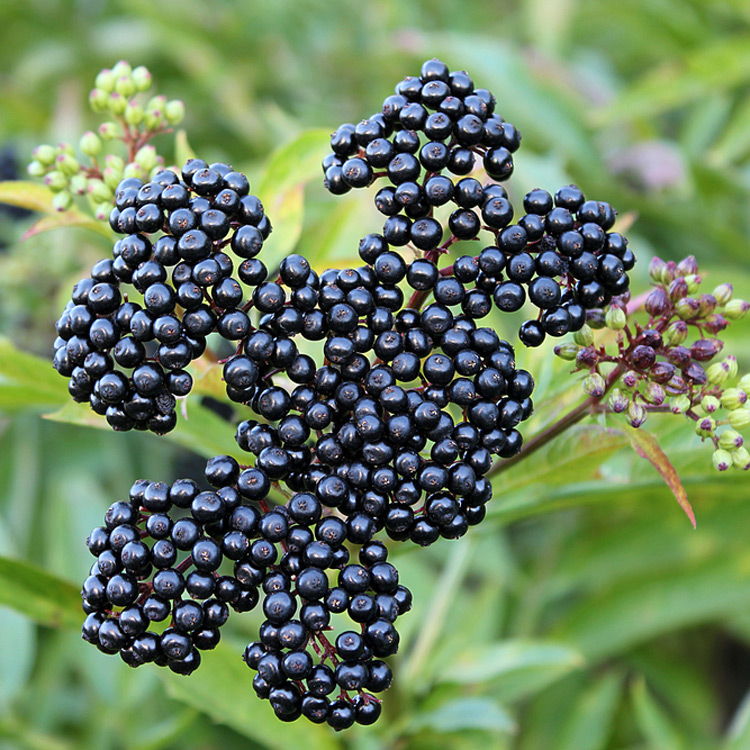
| Elderberries | The plant leaves are pinnate with 5-9 leaflets that have serrated margins. They bear large clusters of small white or cream-colored flowers in late spring. These are followed by clusters of small black, blue-black, or red berries, rarely yellow or white. It is found in temperate to subtropical areas. For use, it is eaten. Animals use it to ease pain or help with flu symptoms. |
| Willow | Willow trees are found most in alpine areas. The willow bark is sometimes used by animals. For use, it is eaten. Animals use it to ease pain. The willow leaves are also used. For use, they are eaten. Animals use them to stop vomiting. | |
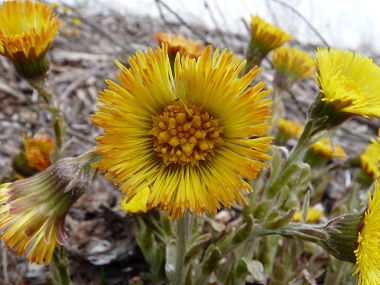 |
Coltsfoot | Coltsfoot is a flowering plant with yellow or white flowers resembling dandelions. It grows best during the spring. Can usually be found around water sources. For use, the leaves are chewed into a pulp. Animals use it to ease breathing or coughing, as well as for cracked or sore pads. |
 |
Goldenrod | Goldenrod is a tall plant with bright yellow flowers. It grows well in the moors but can be found elsewhere occasionally. For use, it is chewed into a poultice. Animals most commonly use it for healing wounds. |
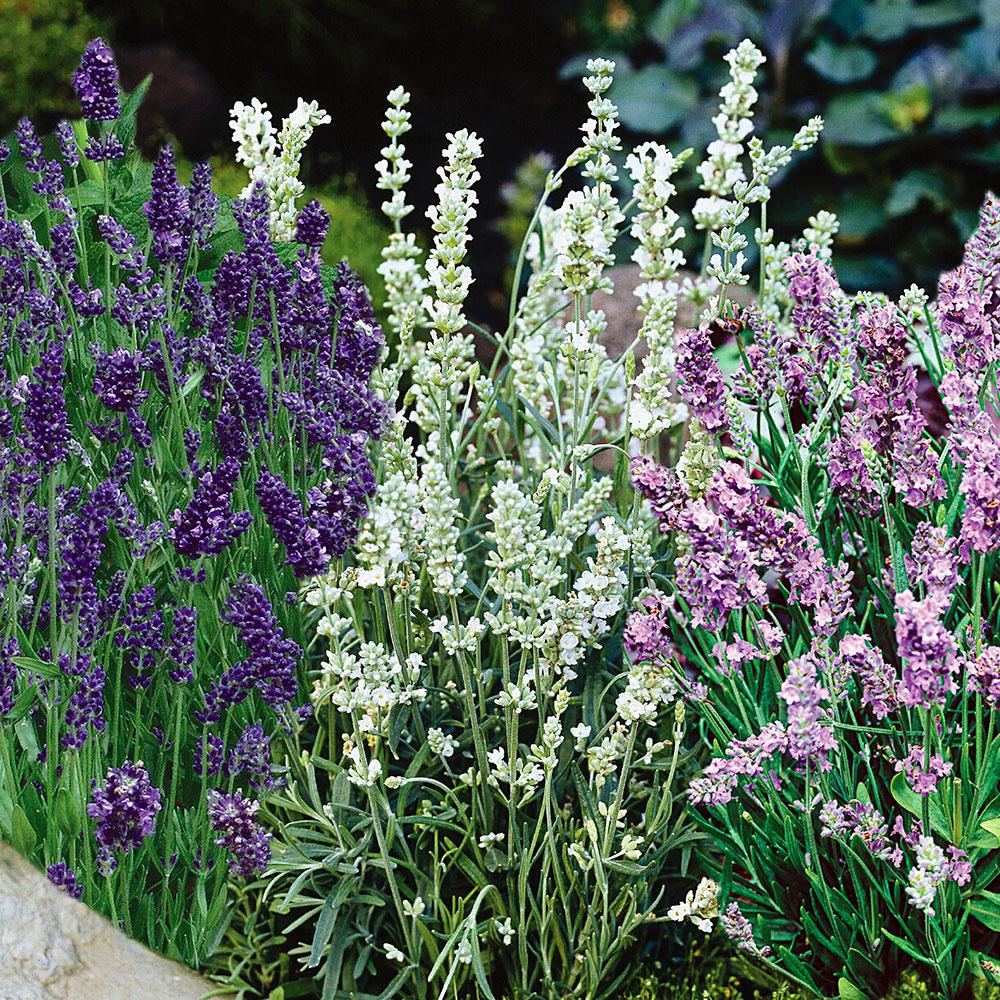 |
Lavender | Lavender is a small purple flowering plant. It is found in sunny spots with sandy or gravelly soil. For use, it is placed under an animal’s nose and is to be inhaled constantly. It can also be rubbed or placed on an animal’s body to hide the scent of death. Animals use it to cure fevers and chills. Some animals use it to hide dead bodies. |
 |
Marigold | A low-growing flower that can be yellow to bright orange. It is mostly found near water. For use, the petals or leaves are chewed into a poultice, the juice can be used as well. Animals use it to stop infection, stop bleeding, or for inflamed stiff joints. |
 |
Tansy | The tansy plant has round, yellow leaves. It has a very sweet and strong scent, making it good for disguising an animal’s scent. Tansy can be found in average or somewhat dry soils, but not wet soils. They grow in full or partial sunlight. For use, it is consumed in small doses. Animals use it to cure coughs, cure wounds and poisons, and to soothe throats. However, this plant can be very dangerous to pregnant animals. |
 |
Watermint | A green, leafy plant, with purple flowers at the end of its spiky stems. It is usually found in streams or damp earth. For use, it is chewed into a pulp and then eaten. Animals use it to ease the suffering that originates from bellyaches. |
 |
Broom | It is a shrub with small leaves and small yellow flowers. The flowers are often solitary but can also come in pairs. It grows best in the forest and is found most often during winter. For use, it is ground into a poultice. When used in a poultice, it can help broken legs and wounds. |
 |
Ginger | Ginger is an annual flowering plant that grows to be about a meter tall. The leaves are long, narrow blades and the flowers are purple. It grows in tropical or subtropical areas. For use, it is eaten. Animals use it to help with coughs. |
 |
Huckleberry | The plant has shallow, radiating roots topped by a bush growing from an underground stem. They grow on subalpine slopes, forests, and lake basins. For use, it is eaten. Animals use it to relieve muscle pain. |
 |
Raspberry Leaves | They are soft to the touch but rough around the edges. Raspberry leaves are found on raspberry bushes. The bushes are more often found in cooler climates and can possibly be found anywhere. Animals use them to ease pain or stop bleeding. |
| Rare | ||
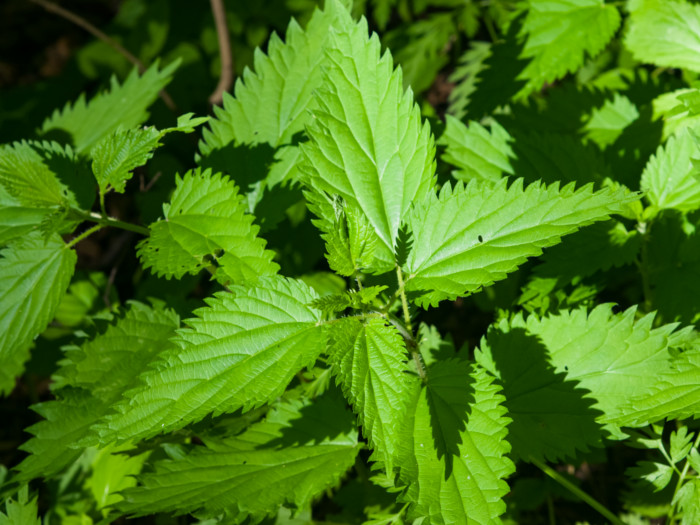 |
Stinging Nettle | Stinging Nettle is correctly named. Its long stinging hairs inject an array of chemicals when touched. This produces an irritating and uncomfortable feeling on the skin. One should take great care in handling this herb. However, its numerous benefits far outweigh this one bad thing. For one, it cleanses the body of toxins. It also improves the nutrient uptake efficiency of the gut, stimulates red blood cell production, speeds up wound healing, boosts energy levels, and relieves fatigue and anemia. Stinging nettle helps with women’s issues too. It helps ease painful labor in pregnant women, reduces bleeding during childbirth, stimulates the production of milk for breastfeeding, soothes menstrual cramps, reduces blood flow during the red days, and helps in hormonal shifts in menopausal women. Stinging nettle also breaks down stones found in the gallbladder and kidney, protects against excess fluid retention, maintains calcium content in our bones, reduce allergic reactions, treat asthma, lower blood pressure, and relieves tension in the cardiovascular system. |
 |
Butterfly Weed | A species of milkweed, it is a perennial plant growing to 1 ft - 3 ft tall, with clustered orange or yellow flowers from early summer to early autumn. The leaves are spirally arranged, lanceolate, 5–12 cm long, and 2–3 cm broad. This plant favors dry, sand or gravel soil, but has also been reported on stream margins and requires full sun. It is commonly known as butterfly weed because of the butterflies that are attracted to the plant by its color and its copious production of nectar. It is also the larval food plant of the queen and monarch butterflies. Hummingbirds, bees and other insects are also attracted. This plant can be used as a treatment for heart failure and cardiac arrhythmia however can lead to death is pregnant mothers and young children. |
 |
Burdock | This is a tall-stemmed thistle with a sharp smell and dark leaves. It’s taste is commonly found to be bitter. Burdock is mostly found in temperate areas. For use, the root is dug up, the soil is washed off, and then it is chewed into a pulp. Animals use this for infected paws or other sores, but if too much is eaten, it can cause a bellyache. |
 |
Chamomile | A small white flower with white pedals and a yellow center. It can be found in sandy-like areas and grows best in cooler areas. For use, it is eaten. Chamomile strengthens the heart and soothes the mind, and can be used on traveling animals for strength during their journey. |
 |
Comfrey | It has large leaves, small bell-shaped flowers, which are pink, white, or purple, and fat, brown roots. The smell is said to be tangy. Comfrey is only found in damp, grassy places. For use, roots are chewed into a poultice and can also be lined in one’s bed or den. Repairs broken bones or soothes wounds, as well as used for wrenched claws. It can also be useful for itching or inflamed joints. Comfrey can ease stiffness or wrenched shoulders when lined in a bed or den. And is also used for burns. |
 |
Horsetail | A tall, bristly-stemmed plant, referred to with fleshy stalks. It is only found in marshy areas. For use, it is chewed into a poultice and applied to wounds. Animals use it to treat infections and stop bleeding. |
 |
Aloe Vera | Aloe Vera is a stemless or very short-stemmed plant growing to 24–39 in tall, spreading by offsets. The leaves are thick and fleshy, green to grey-green, with some varieties showing white flecks on their upper and lower stem surfaces. The margin of the leaf is serrated and has small white teeth. The flowers are produced in summer on a spike up to 35 in tall, each flower being pendulous, with a yellow tubular corolla 2–3 cm long. For use, it is applied to the skin. Animals use it to treat burns. |
|
♚OOC UPDATES♚
I want to thank you all for participating in the events we prepared for you all. It is now Winter time, which means its time to age up your characters by .25 years. This means that if your character is 3.25 they will now be 3.50. Also we would like to congratulate Khae for being chosen to become a Moderator on the site! That's all we have for this announcement for now, but remember that the event is continuing until April 7th! Its Fall now! So age up your characters by .25 years. If you aren't sure about your character's age, simply ask a staff member or check out the Character Creation page. We also bring you guys a few profile updates as well as an entirely new individual magic branch called Metal! Time to age up again! That means if your character is 2.50 they will now be 2.75 years old. Not only that but we have also brought you guys a full makeover of the boards! Not only are the images new and crisp but now once you hover over them, the words will be shown. We also give you guys some new Gods as well as new landmarks! So be sure to check that all out. Congradulations to our OTM winners! Cinni for member of the month, Bernadette for character of the month, Bernadette and Vorek for couple of the month, and Lost in Thought for thread of the month. Spring has sprung and with it, it seems that Gods have calmed down a little. Though no one has come down to speak or take care of the ruined earth that still remains. Don't forget to age up your character by .25 and keep an eye out for the Gods to appear soon. Winter has come! And with it, the aging of all the characters on the site. This means that all characters should be aged up by .25. So if a character is 2.50 years old, they will now be 2.75 years old. If you're unsure, feel free to contact a staff member for help. The Feast of Magic has come and gone and with it, our first blessed character! Congradulations to Eshe for getting blessed by Alina. Not only that, but a lot of prizes were given out to those that participated as well as plenty of points! We have also announced our Best in Class and would like to congrats everyone who won. With the Feast of Magic coming to an end, the fun isn't over yet! Tsuna has come down to gather creatures for her own celebtaions. Lets hope it goes as smootly as the Feast did. Welp guys, its that time again! Time for your characters to age up by .25! This means that if your character is currently 2.50 they would now be 2.75. Fall time is here and with it will come many more events, contests and celebrations! We can't wait! The spring time has come to an end and with it, comes the hot summer time! The sun is out and the days are longer. Don't forget to age up your character's by .25 years! This means that if your character is currently 2.25 they will now be 2.50 years old. Our first God Celebration will be happenig soon so make sure to keep an eye out for that. We will bring you guys some cool stuff soon! After a long time waiting, Winsera is finally open for members and creatures alike. The road to get here was tedious and long but here we are now. Several types of creatures are welcome and we also have 12 different kingdoms that are open to be claimed as well as 6 existing kingdoms for those that don't want to rule. Six different magics come from the realms where the kingdoms live but we also provide individual magic for those that wish to have some magic and be a rogue, or just want to be something special. Without futher ado, Staff welcomes you and your characters to Winsera, a new elemental based animal roleplay site. |
♚IC UPDATES♚
Nearing the end of the festival, the Gods have chosen their choice to be blessed: Bernadette. She has been gifted the blessing of Oris along with a owl companion. Not only that, but Alina has given Bernadette, Vincent and Finnegan the blessing of a single little with at least three cubs, one of each of their species. What a wonderful and peaceful time it is, but how long will it remain? The Gods have gathered around to create a peaceful time for the creatures of Winsera. Not only has Azar, Tsuna and Oris created fun events for the members to join in on, but they have also all come together to create a wonderful feast for the creatures of Winsera to enjoy. During this time, a panther named Korivan has taken up the mantle of Leader in the new Water Kingdom of Levidor, though Tsuna is a bit weary after the loss of Vorek. Time will only tell if Water will keep their kingdom. The Gods have come together to announce several new changes to the land. All the Gods have finally agreed to give the creatures of Winsera gifts for their hard work. Each realm land has been given individual landmarks. That wasn't the only important announcement though as the Gods have finally brought their children in to help rule over the land. The Gods seemed to have calmed down a little though no God has come down to clean up the mess that Azar, Inanis, and Cerulle have created. Out of all the creatures of the land, only Axel and Satan stepped up to try and please the Gods. With a battle raging against them, only time will tell if the Gods are happy with their show of power. Meanwhile, Serenity has taken up ownership of the Kingdom known as Amshu within the Light Realm since Eshe has gone missing. In Tsuna's lands, not one, but two kingdoms have fallen, leaving her without any leaders. Vorek went missing and so did Alexon, both unable to keep up their leaderships. The Gods have shown their wrath for the very first time, though it seems only half of them are angry. Inanis, Cerulle, and Azar have all come together to cause hell on earth, bringing down darkness, lava, and wind storms across all the land. Will the creatures of Winsera be able to survive? The Feast of magic was called by all of the Gods, inviting everyone to come and feast as well as take their gifts. Toward the end of the Feast, Alina stepped forward to bless the first creature upon Winsera. With her blessing, Eshe gained certain blessed magics as well as the praise from the Gods themselves. Not long after the end of the feast, Tsuna showed up to call her own celebation in her name. Meanwhile many kingdoms have taken a tumble off the rails. Kaine's kingdom of Arcadia has taken a fall from Earth, causing Oris much disapointment. With the call for the leaders marking the end of the season, it is clear the Gods have something planned though what it is hasn't made itself known as of yet. Oris isn't the happiest as Cosmos clearly couldn't take the pressure of being a leader and shut down his kingdom before it even had a chance to get off the ground. All the while, a possible war is brewing between Helfer and the joined kingdoms of Zadia and Avalon. Only time will tell if the rivalry between the kingdoms sputters out or continues to rise. On a happier note, Eshe was the first to mother children along with her lover Vincent Ryder who brought two little babies into the world. On the opposite side of the lands, a lonely cougar, Freya Arrio gave birth to the first hybrid child under the close watch of their father, Axel. With the Cerulle Celebration coming to an end, several more creatures have believed themselves worthy of standing beneath the Gods themselves to carry the title of Leader. Cosmos was the last one to claim the land of Earth, securing his kingdom, Météores, beneath the Almighty Oris. The first to claim in Cerulle's land was Delgata who named her kingdom Ashara though not long after her, Axel claimed the first land within the Fire Realm and named it Absalom. The last to currently claim a kingdom is Alexon, becoming leader of Pacem Fides within the Water Realm. What future holds these new leaders and those before them that have continued to stand tall? Marking the first of many Godly Celebrations, Cerulle has come down from the heaves to call for all creatures, big and small, to gather in the Radmere Meadow. She had let them all linger and chat but as the celebration begins to come to a close, one may wonder what news she may have to offer upon her return to end her Celebration. Though the land is new, five creatures have already began to stake their claim under the gods they admire the most. Kaine was the first to choose their lands and found themselves becoming the leader of the new Arcadia Kingdom residing in the Esna Covert. Not long after him, Bernadette Nokosi stood tall as she called for her kingdom of Avalon to be born within the Ebony Woods. Sneaking down in the darkness, Satan Drazen took claim to the Conomar Caverns, making it the home of the Helfer Kingdom. Next in line was Vorek Vozensky, who created Zadia Kingdom within the Baxney Cove. The last to take the throne so far was Eshe Reva, finding her spot in the new Amshu Kingdom within the Etmos Fields. The foundations have been set for these brave creatures to build kingdoms that will be put to the test, not only by others, but from within. Even the gods are anxious to see what their followers will do in their names. Only time will tell, for those that last, that is. 6 deities, all controlling a basic facet of life, have come together to form a land in which those that would follow them would be given power. This land has been dubbed Winsera and its fate is still yet unknown. There are many areas waiting to be claimed, it's just a matter of time. |
|
Roslyn
Owner
Admin
Malcolm
Admin
Maria
Admin
Z
Admin
Staff Name
Mod
Staff Name
Mod Coder
Staff Name
Helper
Staff Name
Helper
Staff Name
Helper
|
Total Members
Total Posts
Total Threads |
MEMBER OTM:
Cinni CHARACTER OTM: COUPLE OTM: & Vorek THREAD OTM: |
CREDITS
Winsera was made by Roslyn. Content is copyrighted to Winsera unless otherwise stated.
The current banner was made by Roslyn. The skin is created by Red☠Frost of Adxography v.2. Simple Hover Boxes by Alisha of Adox. & Proboards Support. Banner Hover by Sari-Sinister of Proboards Support. Info Center Remodel by Cadetremi of Adox. Icons made by Freepik from www.flaticon.com is licensed by CC 3.0 BY Glide Shoutbox and Shoutbox Remodel by Alisha of Adox. & Proboards Support. Mini-Profile Remodel by Time Lapse of Adox. |
Season & Time Chat BoxRealms Fire Fire 
 Water Water 
 Air Air 
 Earth Earth 
 Shadow Shadow 
 Light Light 
|
AnnouncementsRecent Threads |

